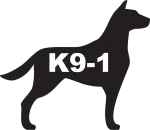Dog Training World › Forums › Aggression Problems › Territorial Aggression › Didjeri, the Blue Healer with Territorial Aggression. Need help with Solutions! › Reply To: Didjeri, the Blue Healer with Territorial Aggression. Need help with Solutions!
-
My question here would be about interruptions, I have found that interrupting or correcting an emotional response can cause safety issues and negative side effects. During consults or intros, I usually sit down with the training pyramid and go “up” it with the client and go over how it relates to their dog. This way we can be sure they have a fair expectation of what the purpose and tactical applications will be. Instead of interrupting or blocking or correcting, I’d start with managing the dogs access in the home, so that they don’t have to block or interrupt or correct behaviors.
I wrote this for a client post on my group page, it is kinda relevant with other dogs…but it in relation to my question about the PDF.
We can’t get around Ethology. Dogs care about their home and they care about their family members. Punishing a dog for barking or being nervous is punishing an emotional response, punishing an emotional response doesn’t teach the dog anything other than stacked negative experiences and can result in subduing the dog. Punishing emotions does not build the dog and handler bond.
A subdued dog is not by definition an obedient dog. A subdued dog cannot have confidence in their handler.
Interruptors or projectiles utilize fear and/ or pain successfully (might work a few times or in a pinch) and cannot be escalated humanely or predictably without severely deviating from LIMA, spray bottles, rocks or penny’s in cans, bonkers, pointing and yelling, are a few examples. If they do “work” it is because they have subdued the animal.
We should not use “game time” as practice time. Athletes don’t perfect their game during the playoffs, they practice all season long and even run scrimmages so that when the heat is turned up they can perform. We need to apply the same understanding for our dogs training and when we set our expectations.
Using command structure ensures the dog can be definitively obedient. Meaning the correction is predictable and not paired with the first command. This will build the dogs confidence in the handler and in their ability to control the outcome of their behavior.
https://dogtraining.world/knowledge-base/command-structure-chart/
Hope this helps
dogtraining.world
Command Structure Chart – DogTraining.World
Command Structure Chart – DogTraining.World


